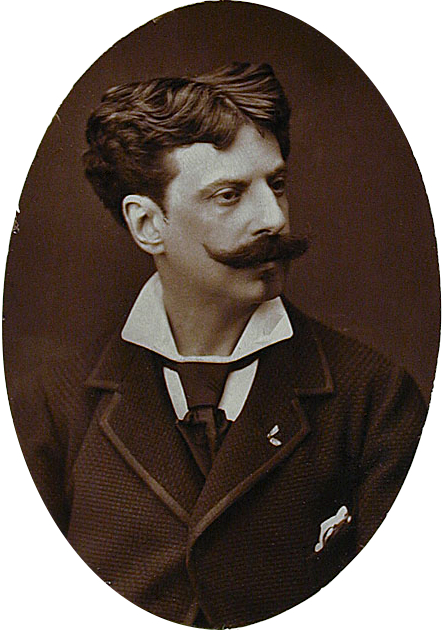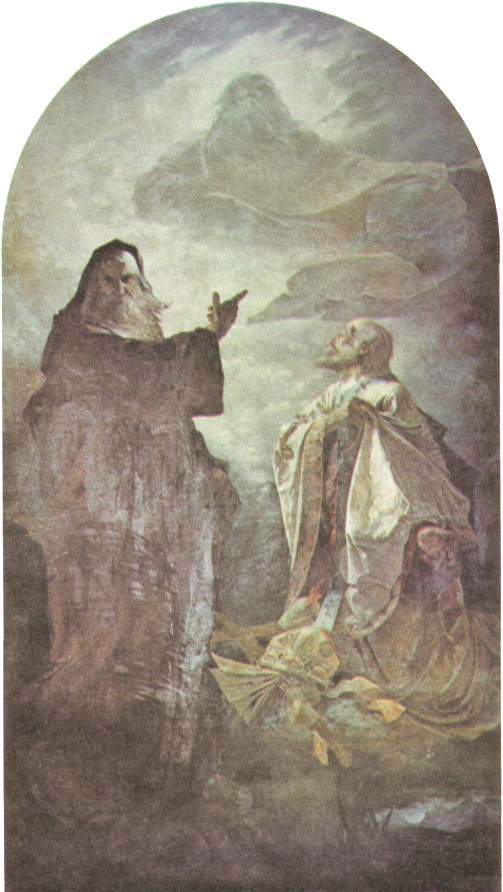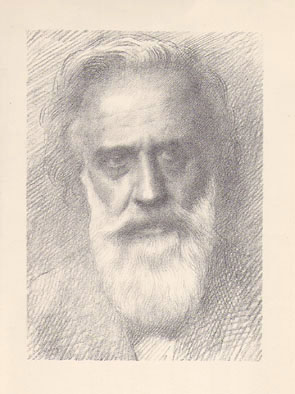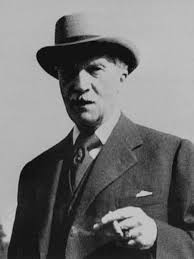|
Alphonse (given Name)
Alphonse is the French variant of the given name Alphons. People called Alphonse include: In arts, entertainment, and media Film, television, and theatre * Alphonse Beni, Cameroonian actor and movie director * Alphonse Boudard (1925–2000), French novelist and playwright * Alphonse Ouimet (1908–1988), Canadian television pioneer and president of the Canadian Broadcasting Corporation from 1958 to 1967 * Alphonse Royer (1803–1875), French author, dramatist and theatre manager Music * Alphonse "Bois Sec" Ardoin (1915–2007), American accordionist * Alphonse Duvernoy (1842–1907), French pianist and composer * Alphonse Hasselmans (1845–1912), Belgian-born French harpist, composer and pedagogue * Alphonse Joseph (composer), Indian film score composer * Alphonse Martin (1884–1947), Canadian organist, pianist and music educator * Alphonse Mouzon (1948–2016), American jazz fusion drummer and percussionist * Alphonse Picou (1878–1961), American early jazz clarinetist * ... [...More Info...] [...Related Items...] OR: [Wikipedia] [Google] [Baidu] |
Alphons
Alphons (Latinized ''Alphonsus'', ''Adelphonsus'', or ''Adefonsus'') is a male given name recorded from the 8th century (Alfonso I of Asturias, r. 739–757) in the Christian successor states of the Visigothic kingdom in the Iberian peninsula. In the later medieval period it became a standard name in the Hispanic and Portuguese royal families. It is derived from a Gothic name, or a conflation of several Gothic names; from ''*Aþalfuns'', composed of the elements ''aþal'' "noble" and ''funs'' "eager, brave, ready", and perhaps influenced by names such as ''*Alafuns'', ''*Adefuns'' and ''* Hildefuns''. It is recorded as ''Adefonsus'' in the 9th and 10th century, and as ''Adelfonsus'', ''Adelphonsus'' in the 10th to 11th. The reduced form ''Alfonso'' is recorded in the late 9th century, and the Portuguese form ''Afonso'' from the early 11th. and ''Anfós'' in Catalan from the 12th Century until the 15th. Variants of the name include: ''Alonso'' (Spanish), ''Alfonso'' (Spanis ... [...More Info...] [...Related Items...] OR: [Wikipedia] [Google] [Baidu] |
Alphonse-Marie-Adolphe De Neuville
Alphonse-Marie-Adolphe de Neuville (31 May 183518 May 1885) was a French academic painter who studied under Eugène Delacroix. His dramatic and intensely patriotic subjects illustrated episodes from the Franco-Prussian War, the Crimean War, the Zulu War, and portraits of soldiers. Some of his works have been collected by the Hermitage Museum in St. Petersburg and by the Metropolitan Museum in New York. Early life Born Alphonse-Marie-Adolphe Deneuville to wealthy parents at Saint-Omer, Pas-de-Calais, he earned his degree of ''bachelier ès-lettres'', and in 1856 entered the naval school at Lorient in spite of family opposition. It was there that his artistic instincts started. The young Alphonse de Neuville was discouraged by several painters of repute, but he was admitted to work in the studio of François-Edouard Picot. He did not remain there long. He was already painting by himself when he produced his first picture, ''The Fifth Battalion of Chasseurs at the Gervais Batt ... [...More Info...] [...Related Items...] OR: [Wikipedia] [Google] [Baidu] |
Henri-François-Alphonse Esquiros
Henri-François-Alphonse Esquiros (23 May 1812 – 12 May 1876) was a French writer born in Paris. He usually wrote with the name Alphonse Esquiros. After some minor publications he produced ''L'évangile du peuple'' (1840), an exposition on the life and character of Jesus as a social reformer. This work was considered an offense against religion and decency, and Esquiros was fined and imprisoned. He was elected in 1850 as a socialist to the Legislative Assembly, but was exiled in 1851 for his opposition to the Second French Empire. Returning to France in 1869 he was again a member of the Legislative Assembly, and in 1876 was elected to the senate. He died at Versailles The Palace of Versailles ( ; french: Château de Versailles ) is a former royal residence built by King Louis XIV located in Versailles, about west of Paris, France. The palace is owned by the French Republic and since 1995 has been managed, u ... on 12 May 1876. He turned to account his residence in England ... [...More Info...] [...Related Items...] OR: [Wikipedia] [Google] [Baidu] |
Joseph-Alphonse Esménard
Joseph-Alphonse Esménard (1770, in Pélissanne – 25 June 1811, in Fondi) was a French poet and the brother of the journalist Jean-Baptiste Esménard and father of the artists Inès Esménard and Nathalie Elma d'Esménard. Biography In 1790, a year after the beginning of the French Revolution, Esménard was a royalist deputy. He was proscribed on Aug. 10, 1792 and consequently left France to travel around Europe, going to England, the Netherlands, Germany, Italy, Constantinople (present-day Istanbul in Turkey), and Greece. Returning to Paris in 1797, he wrote for ''La Quotidienne'' but was forced to emigrate again that same year after the Coup of 18 Fructidor in September, not without first spending two months in the Prison du Temple."Joseph-Alphonse Esménard,Académie Française website retrieved 23 March 2022 He returned to France again after the Coup of 18 Brumaire in 1799, but afterwards left for Saint-Domingue as secretary to general Leclerc on the Saint-Domingue ex ... [...More Info...] [...Related Items...] OR: [Wikipedia] [Google] [Baidu] |
Alphonse De Lamartine
Alphonse Marie Louis de Prat de Lamartine (; 21 October 179028 February 1869), was a French author, poet, and statesman who was instrumental in the foundation of the Second Republic and the continuation of the Tricolore as the flag of France. Biography Early years Born in Mâcon, Burgundy on 21 October 1790 into a family of the French provincial nobility, Lamartine spent his youth at the family estate. He is famous for his partly autobiographical poem, "Le lac" ("The Lake"), which describes in retrospect the fervent love shared by a couple from the point of view of the bereaved man. Lamartine was masterly in his use of French poetic forms. Raised a devout Catholic, Lamartine became a pantheist, writing ''Jocelyn'' and ''La Chute d'un ange''. He wrote ''Histoire des Girondins'' in 1847 in praise of the Girondists. Lamartine made his entrance into the field of poetry with a masterpiece, ''Les Méditations Poétiques'' (1820) and awoke to find himself famous. One of the nota ... [...More Info...] [...Related Items...] OR: [Wikipedia] [Google] [Baidu] |
Alphonse De Châteaubriant
Alphonse Van Bredenbeck de Châteaubriant (; 25 March 1877 – 2 May 1951) was a French writer who won the Prix Goncourt in 1911 for his novel ''Monsieur de Lourdines'' and Grand prix du roman de l'Académie française for ''La Brière'' in 1923. After a visit to Germany in 1935 he became an enthusiastic advocate for Nazism. Along with other Breton nationalists he supported fascist and anti-semitic ideas in opposition to the French state. In 1940 he founded the pro-Nazi weekly newspaper La Gerbe and served as President of the Groupe Collaboration.David Littlejohn, ''The Patriotic Traitors'', Heinemann, 1972, p. 222 During World War II, he was a member of the central committee of the ''Legion of French Volunteers Against Bolshevism, Légion des Volontaires Français contre le Bolchévisme'', an organisation founded in 1941 by Fernand de Brinon and Jacques Doriot to recruit volunteers to fight alongside the Germans Eastern Front (World War II), in the USSR. In 1945 he fled to Austr ... [...More Info...] [...Related Items...] OR: [Wikipedia] [Google] [Baidu] |
Alphonse Daudet
Alphonse Daudet (; 13 May 184016 December 1897) was a French novelist. He was the husband of Julia Daudet and father of Edmée, Léon and Lucien Daudet. Early life Daudet was born in Nîmes, France. His family, on both sides, belonged to the ''bourgeoisie''. His father, Vincent Daudet, was a silk manufacturer — a man dogged through life by misfortune and failure. Alphonse, amid much truancy, had a depressing boyhood. In 1856 he left Lyon, where his schooldays had been mainly spent, and began his career as a schoolteacher at Alès, Gard, in the south of France. The position proved to be intolerable and Daudet said later that for months after leaving Alès he would wake with horror, thinking he was still among his unruly pupils. These experiences and others were reflected in his novel ''Le Petit Chose''. On 1 November 1857, he abandoned teaching and took refuge with his brother Ernest Daudet, only some three years his senior, who was trying, "and thereto soberly," to make a living ... [...More Info...] [...Related Items...] OR: [Wikipedia] [Google] [Baidu] |
Alphonse Allais
Alphonse Allais (20 October 1854 – 28 October 1905) was a French writer, journalist and humorist. Life Allais was born in Honfleur, Calvados. He died in Paris. Work He is the author of many collections of whimsical writings. A poet as much as a humorist, he cultivated the verse form known as holorhyme (all verses are homophonous, where entire lines are pronounced the same). For example: Par les bois du djinn où s'entasse de l'effroi, Parle et bois du gin, ou cent tasses de lait froid. Allais wrote the earliest known example of a completely silent musical composition. His ''Funeral March for the Obsequies of a Great Deaf Man'' of 1897 consists of 24 blank measures. It predates similarly silent but intellectually serious works by John Cage and Erwin Schulhoff by many years. His prose piece "Story for Sara" was translated and illustrated by Edward Gorey. Allais participated in humorous exhibitions, including those of the Salon des Arts Incohérents of 1883 and 1884, held at ... [...More Info...] [...Related Items...] OR: [Wikipedia] [Google] [Baidu] |
Alphonse Osbert
Alphonse Osbert (23 March 1857 – 11 August 1939) was a French Symbolist painter. Educated at the École des Beaux-Arts, his earliest passion was for the great Spanish masters, particularly Jusepe de Ribera. A shift away from his academic style took place in the late 1880s under the influence of several acquaintances associated with Post-Impressionism and Symbolism. Osbert abandoned naturalistic painting in favour of a Pointillist technique like that employed by Seurat and Signac. Also inspired by Pierre Puvis de Chavannes and the Symbolists, he chose to forsake depiction of real-world subject matter, and developed a poetic visual language of his own. His signature style consists of ghostlike Muses in mysterious landscapes bathed in the unearthly light of a sun or moon, rendered with abundant use of the colour blue. In the 1890s he was associated with Joséphin Péladan and his order, the Kabbalistic Order of the Rose-Cross. Osbert's later works include a few commissioned mur ... [...More Info...] [...Related Items...] OR: [Wikipedia] [Google] [Baidu] |
Alphonse Mucha
Alfons Maria Mucha (; 24 July 1860 – 14 July 1939), known internationally as Alphonse Mucha, was a Czech painter, illustrator and graphic artist, living in Paris during the Art Nouveau period, best known for his distinctly stylized and decorative theatrical posters, particularly those of Sarah Bernhardt. He produced illustrations, advertisements, decorative panels, as well as designs, which became among the best-known images of the period. In the second part of his career, at the age of 57, he returned to his homeland and devoted himself to a series of twenty monumental canvases known as ''The Slav Epic'', depicting the history of all the Slavic peoples of the world, which he painted between 1912 and 1926. In 1928, on the 10th anniversary of the Czechoslovak declaration of independence, independence of Czechoslovakia, he presented the series to the Czech nation. He considered it his most important work. Early life Mucha was born on 24 July 1860 in the small town of Ivančice ... [...More Info...] [...Related Items...] OR: [Wikipedia] [Google] [Baidu] |
Alphonse Legros
Alphonse Legros (8 May 1837 – 8 December 1911) was a French, later British, painter, etcher, sculptor, and medallist. He moved to London in 1863 and later took British citizenship. He was important as a teacher in the British etching revival. Life Legros was born in Dijon; his father was an accountant, and came from the neighbouring village of Véronnes. While young, Legros visited the farms of his relatives, and the peasants and landscapes of that part of France are the subjects of many of his works. He was sent to the art school at Dijon with a view to qualifying for a trade, and was apprenticed to Maître Nicolardo, house decorator and painter of images. In 1851, Legros left for Paris to take another situation; but passing through Lyon he worked for six months as journeyman wall-painter under the decorator Beuchot, who was painting the chapel of Cardinal Bonald in the cathedral. In Paris, Legros studied with Charles-Antoine Cambon, scene-painter and decorator of the ... [...More Info...] [...Related Items...] OR: [Wikipedia] [Google] [Baidu] |
Alphonse Laverrière
Alphonse Laverrière (16 May 1872 – 11 March 1954) was a Swiss architect. He studied at the École nationale supérieure des beaux-arts and was professor at the Swiss Federal Institute of Technology in Zurich. In 1912, he won a gold medal together with Eugène-Edouard Monod in the art competitions of the Olympic Games. They created a "Building plan of a modern stadium". Between 1922 and 1951, Laverrière designed the Bois-de-Vaux Cemetery at Lausanne and is buried there. (in French) at lausanne.ch, accessed 3 March 2019 Works * * ...[...More Info...] [...Related Items...] OR: [Wikipedia] [Google] [Baidu] |






